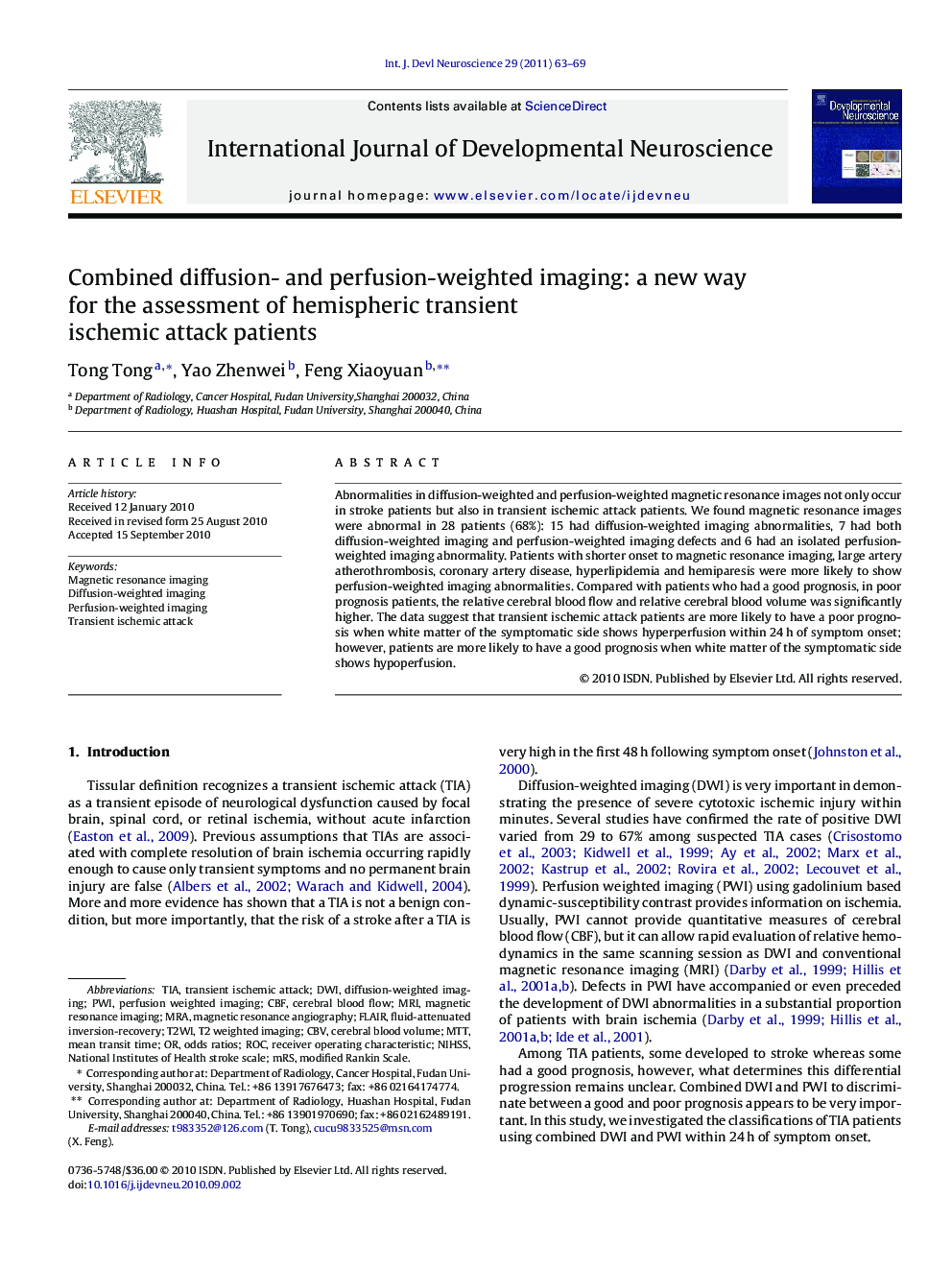| Article ID | Journal | Published Year | Pages | File Type |
|---|---|---|---|---|
| 5893993 | International Journal of Developmental Neuroscience | 2011 | 7 Pages |
Abnormalities in diffusion-weighted and perfusion-weighted magnetic resonance images not only occur in stroke patients but also in transient ischemic attack patients. We found magnetic resonance images were abnormal in 28 patients (68%): 15 had diffusion-weighted imaging abnormalities, 7 had both diffusion-weighted imaging and perfusion-weighted imaging defects and 6 had an isolated perfusion-weighted imaging abnormality. Patients with shorter onset to magnetic resonance imaging, large artery atherothrombosis, coronary artery disease, hyperlipidemia and hemiparesis were more likely to show perfusion-weighted imaging abnormalities. Compared with patients who had a good prognosis, in poor prognosis patients, the relative cerebral blood flow and relative cerebral blood volume was significantly higher. The data suggest that transient ischemic attack patients are more likely to have a poor prognosis when white matter of the symptomatic side shows hyperperfusion within 24Â h of symptom onset; however, patients are more likely to have a good prognosis when white matter of the symptomatic side shows hypoperfusion.
Research highlightsⶠTIA patients with shorter onset to magnetic resonance imaging, large artery atherothrombosis, coronary artery disease, hyperlipidemia and hemiparesis were more likely to show perfusion-weighted imaging abnormalities. ⶠCompared with TIA patients who had a good prognosis, in poor prognosis patients, the relative cerebral blood flow and relative cerebral blood volume was significantly higher. ⶠTIA patients are more likely to have a poor prognosis when white matter of the symptomatic side shows hyperperfusion;patients are more likely to have a good prognosis when it shows hypoperfusion.
